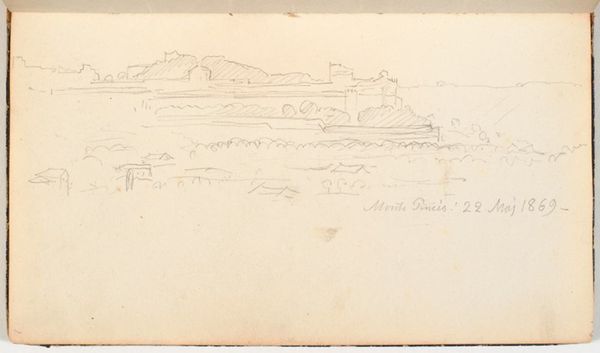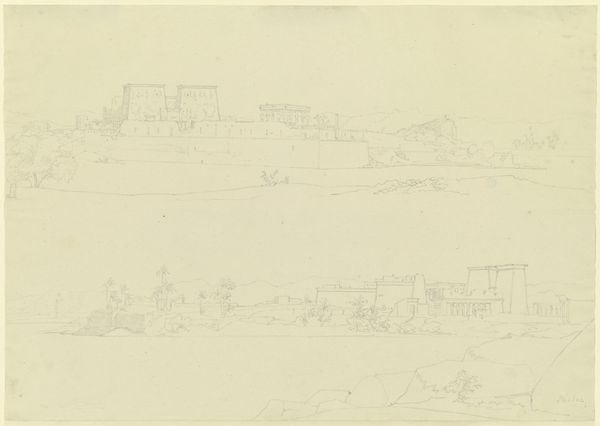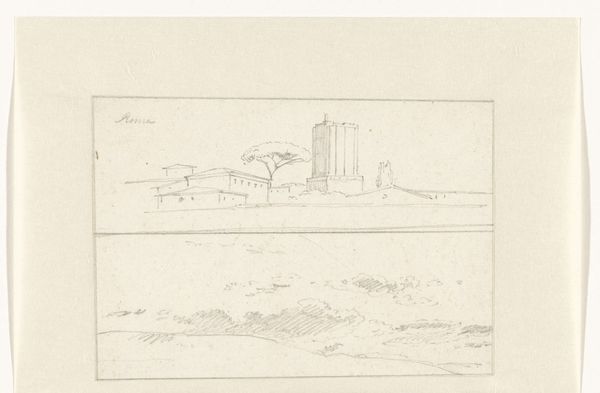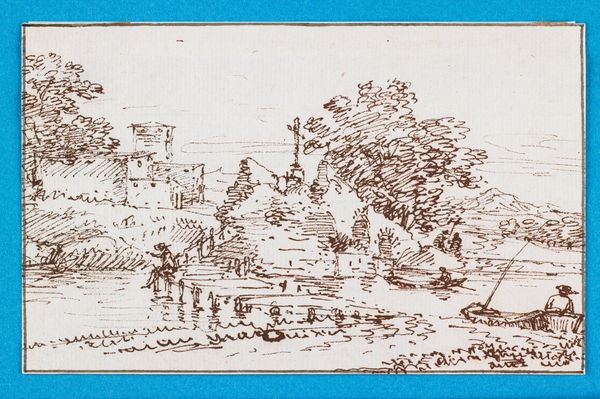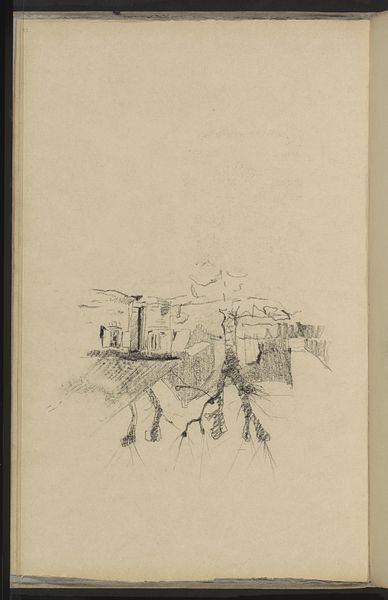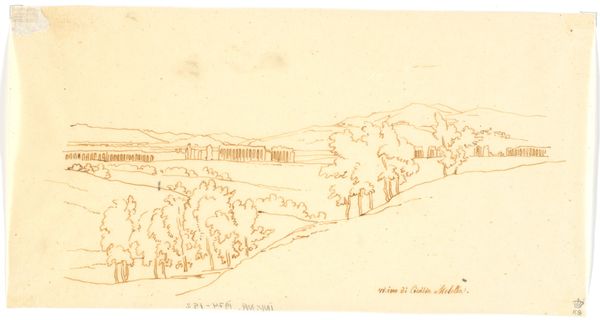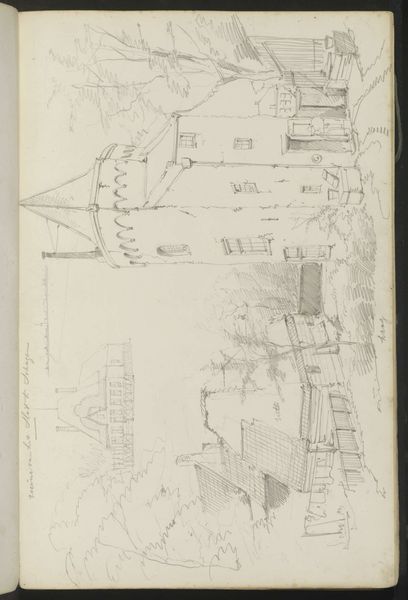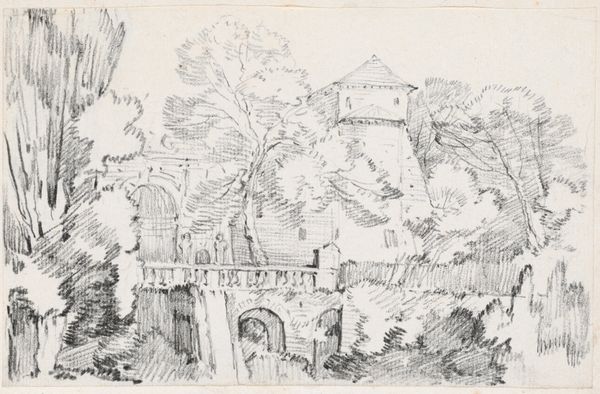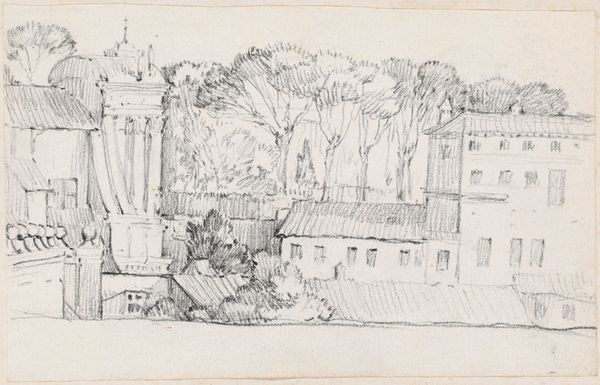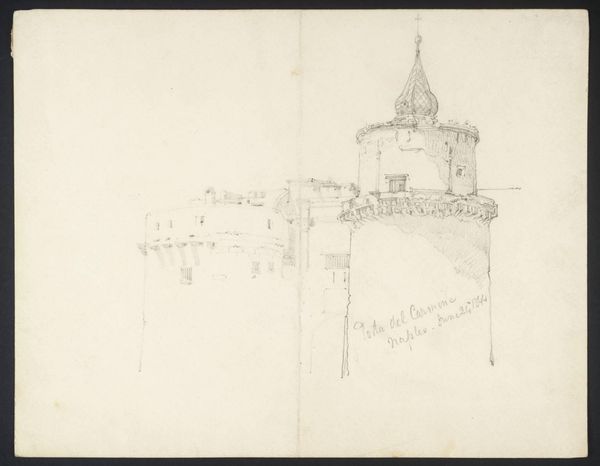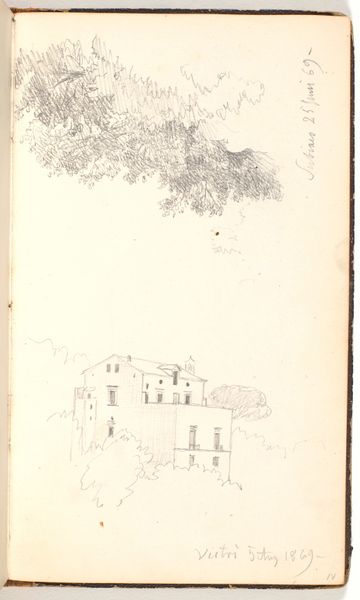
Parti fra Tivoli med en bygning med to tårne, en mand står yderst til højre 1869
0:00
0:00
Dimensions: 204 mm (height) x 115 mm (width) (bladmaal)
Editor: This is "Parti fra Tivoli med en bygning med to tårne, en mand står yderst til højre," or "View from Tivoli with a Building with Two Towers, a Man Stands Furthest to the Right," a pencil drawing by P.C. Skovgaard, created in 1869. I’m struck by its quiet simplicity. What stands out to you? Curator: What I find interesting is how this drawing, ostensibly a landscape, engages with the broader political and cultural landscape of Denmark at the time. Skovgaard was a key figure in the Danish Golden Age, a period deeply invested in forging a national identity. Editor: How does that manifest itself in this particular drawing? Curator: Well, consider the choice of subject: Tivoli. Today, we think of it as an amusement park, but in 1869, it represented a conscious effort to create a space for public enjoyment, reflecting a budding democratic ideal. What’s more, Romanticism, and by extension the artistic conventions of the Academic style were understood, promoted, and received by a diverse public through the proliferation of museums and galleries, supported in turn by new types of institutions like art academies. So why choose a seemingly ordinary scene like this? Editor: Is he elevating the everyday or suggesting something about Danish values? Curator: Precisely! He uses the understated beauty of the landscape to reinforce a sense of national pride and shared experience, which reflects a certain understanding of beauty itself in society. How might the formal qualities - the light, composition - support this interpretation? Editor: The soft pencil lines and open composition definitely give it an accessible, welcoming feel. I also noticed that the man to the right adds a sort of human scale and relates us directly to the scene as observers. Curator: Exactly! It's about situating the viewer within this national narrative. The seemingly simple scene contains layers of meaning that speak to Denmark's cultural and political aspirations in the mid-19th century. Editor: That’s fascinating, I never would have considered the political implications of a landscape drawing like this. It's so interesting how art can reflect, and even shape, national identity. Curator: Indeed. Looking beyond the immediate aesthetic allows us to understand the public role of art in shaping societal values and historical consciousness.
Comments
No comments
Be the first to comment and join the conversation on the ultimate creative platform.

